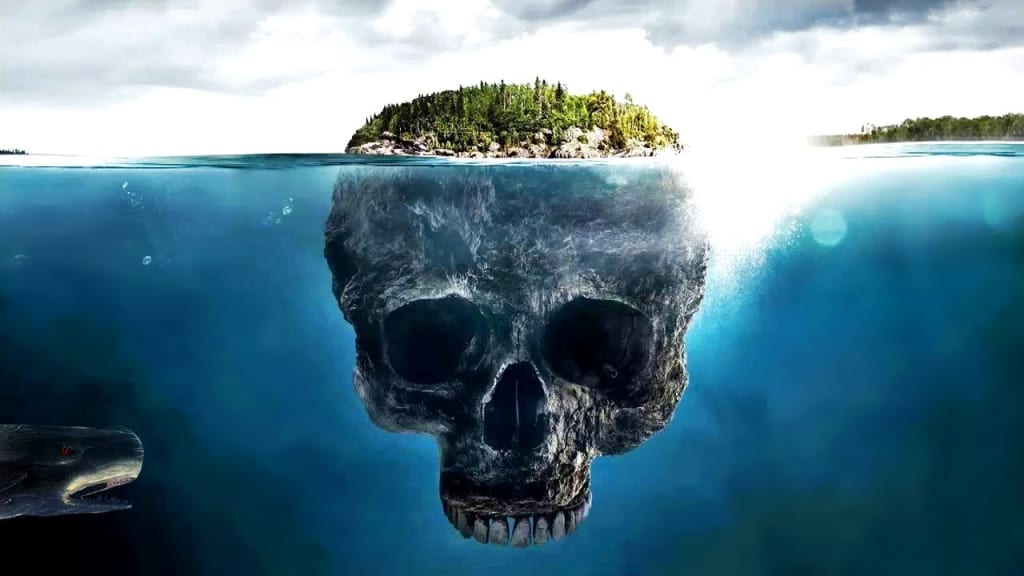
Islands are usually associated with beauty, tranquility, and escape from the chaos of city life. However, not all islands are safe to visit due to their treacherous terrain, hostile environment, and dangerous inhabitants. Some islands are so dangerous that they have been entirely off-limits to the public. In this article, we will explore the top six most dangerous islands in the world, the reasons behind their notoriety, and the risks associated with visiting them.
Snake Island, Brazil:
Located off the coast of Sao Paulo, Brazil, Snake Island is considered one of the most dangerous islands in the world. The island is home to the Golden Lancehead Viper, one of the world's deadliest snakes. The venom of this snake is so potent that it can kill a human within an hour. The Brazilian government has banned tourists from visiting the island to protect them from the deadly snakes.
The Golden Lancehead Viper is unique to Snake Island, and its venom is reportedly three to five times more potent than that of other pit vipers. The venom causes hemorrhaging and can lead to kidney failure, and ultimately, death. There is no known antidote to the venom. The snakes have proliferated on the island because there are no natural predators, and they feed on migratory birds that stop on the island to rest.
The Brazilian Navy occasionally visits the island to maintain the lighthouse that guides ships through the treacherous waters surrounding the island. The island remains strictly off-limits to the public.
North Sentinel Island, India:
North Sentinel Island is one of the most isolated islands in the world and is home to the Sentinelese tribe. The tribe is known for its hostility towards outsiders and has been known to attack anyone who attempts to visit the island. The island is located in the Bay of Bengal, and the Indian government has banned all tourist visits to the island to protect the tribe and visitors.
The Sentinelese tribe is believed to have lived on the island for thousands of years and has remained isolated from the rest of the world. They are a hunter-gatherer society and live off the resources of the island. The tribe has resisted contact with outsiders, and their hostility towards outsiders has resulted in several attacks on visitors who have attempted to visit the island.
In 2018, an American missionary, John Allen Chau, was killed by the tribe while attempting to visit the island. The Indian government has banned all tourist visits to the island to protect the tribe and visitors. The island is monitored by the Indian Navy to prevent any unauthorized visits.
Bikini Atoll, Marshall Islands:
Bikini Atoll was once a beautiful island in the Pacific Ocean until it was used as a nuclear test site by the United States government in the 1940s and 1950s. The island is still contaminated with radiation, making it dangerous for humans to visit. In addition, the island's lagoon is home to several species of sharks, including the grey reef shark and the blacktip shark, which pose a threat to anyone who enters the waters.
The United States conducted 23 nuclear tests on Bikini Atoll between 1946 and 1958. The tests resulted in significant contamination of the island, and the island remains uninhabitable to this day. In 1986, the island was declared a nuclear disaster site, and the US government launched a cleanup operation. Despite the cleanup efforts, the island remains contaminated with radiation, and it is not safe for humans to visit.
In addition to the radiation, the waters surrounding the island are home to several species of sharks, including the grey reef shark and the blacktip shark. The sharks pose a threat to anyone who enters the waters around the island.
Gruinard Island, Scotland:
Gruinard Island is a small island located off the coast of Scotland. The island was used as a testing ground for anthrax during World War II, and the island remains contaminated with the deadly disease. The island was off-limits to the public until the 1980s when the UK government launched a cleanup operation. However, the island remains dangerous, and access is restricted.
During World War II, the UK government used Gruinard Island as a testing ground for anthrax, a deadly disease that can be transmitted to humans and animals. The tests resulted in significant contamination of the island, and the island remained off-limits to the public until the 1980s. The UK government launched a cleanup operation to decontaminate the island, but the island remains dangerous, and access is restricted.
Anthrax spores can survive in the soil for decades, and there is still a risk of exposure to the disease on Gruinard Island. The UK government has placed warning signs around the island to warn visitors of the danger. Access to the island is restricted, and visitors are required to obtain a permit from the UK government.
Ramree Island, Myanmar:
Ramree Island is located off the coast of Myanmar and is known for its deadly saltwater crocodiles. The crocodiles are known to attack humans, and the island has a gruesome history. During World War II, British soldiers were attacked by crocodiles while attempting to escape the Japanese army. The soldiers were forced to fight for their lives against the crocodiles, resulting in several casualties.
Ramree Island is home to one of the largest populations of saltwater crocodiles in the world. The crocodiles are known to attack humans and are responsible for several deaths on the island. In addition to the crocodiles, the island is also home to several venomous snakes, including the king cobra.
The island is now a wildlife sanctuary, and access is restricted to protect the wildlife. Visitors to the island are required to obtain a permit from the Myanmar government, and they are required to be accompanied by a guide.
Ilha da Queimada Grande, Brazil:
Ilha da Queimada Grande, also known as Snake Island, is located off the coast of Brazil and is home to thousands of venomous snakes. The island is considered one of the most dangerous places on earth, and access is restricted.
The island is home to the Golden Lancehead Viper, one of the most venomous snakes in the world. The venom of the snake is so potent that it can kill a human within an hour. The snakes are unique to the island and have proliferated because there are no natural predators. The snakes feed on migratory birds that stop on the island to rest.
The Brazilian government has banned tourists from visiting the island to protect them from the deadly snakes. The island is now a wildlife sanctuary, and access is restricted to researchers and scientists.
Conclusion:
In conclusion, these six islands are some of the most dangerous places on earth, and visiting them can be risky. From deadly snakes to radioactive contamination, these islands pose a threat to human life. While some of these islands are off-limits to the public, others require permits and guides to visit. It's important to understand the risks associated with visiting these islands and to take precautions to protect yourself.
About the Creator
Arish Ali
The world is yours!





Comments (2)
Scaryyyy!!
Wow